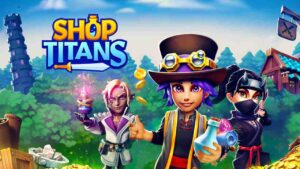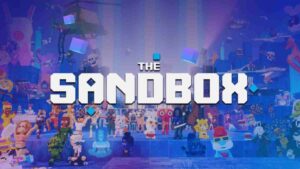The social MMORPG Treeverse is closing out its early token phase and shifting toward refining its open-world plans. Here’s what’s happening with gameplay, tokens, and what it signals for Web3 game development.
A Social MMO Growing Around Its Community
Treeverse has been in the works for a while, positioning itself as a social-focused MMORPG that leans on a casual, open-world approach instead of heavy grind mechanics. It’s built for quick sessions on mobile and PC, with players moving around a top-down world, gathering, crafting, and trading while hanging out in a shared space.
The project has also been one of those Web3 games trying to find the right balance between token systems and actual gameplay. Now it’s hitting a milestone. The end of its TGE phase was officially locked for July 4, marking a shift toward the next development stage.
What the Token Phase Ending Actually Means
Treeverse’s TGE phase has been its early stage of circulating its $ROOT token. With this phase ending, the circulating supply will be capped, moving away from the launch driven distribution to focusing on longer-term integration within the game’s systems.
For players, this means token distribution will stabilize, with ingame mechanics, staking, and governance features gradually unfolding based on what the devs have planned. In the Web3 gaming landscape, ending the TGE doesn’t necessarily signal a complete pivot, but it often frees teams to focus on gameplay tuning instead of constant token distribution cycles.
Gameplay and Visual Style
Treeverse takes a clean, top down pixel art approach that feels reminiscent of older 2D MMOs but sharper, with an emphasis on player owned plots and light ARPG mechanics. It’s designed for accessibility, aiming for sessions that don’t require long daily grinds but allow social interaction and light resource collection.
The game structure focuses on player mobility across a shared map, NFT based plots, and building out player homes and shops that contribute to the ingame economy. It’s more of a social playground with mild RPG elements than a hardcore MMORPG, which aligns with a broader trend in Web3 games trying to keep friction low for onboarding.
Blockchain Use and Future Plans
Treeverse operates on Ethereum, using NFTs for items and land plots while integrating its $ROOT token as the main utility and governance asset. With the TGE phase concluding, the devs plan to move toward community involved governance while slowly expanding gameplay loops around crafting, resource gathering, and cooperative exploration. The roadmap appears to lean on testing and refining before larger feature rollouts.
This reflects a cautious but practical approach seen in other similar projects. By shifting from token launch logistics to actual in-game development, Treeverse is stepping into the part of the cycle where it needs to prove it can be more than just a marketplace for assets.
Context Within Web3 Gaming
Treeverse’s path isn’t unique, but it is notable in a Web3 gaming scene where many projects get stuck focusing on tokenomics while gameplay takes a back seat. The end of the TGE phase is a filter point. It shows whether a project can pivot toward being a game that people want to play, rather than just a place to trade assets.
As open world, social interaction focused Web3 games continue to experiment, Treeverse’s next moves will show how much community building and gameplay depth can actually coexist with blockchain systems in a genre that often struggles to find that balance.
Web3 Analyst & Play Blockchain Games Guide
CryptoKit breaks down Web3 gaming like it’s second nature. From tokenomics to airdrop strategies, she turns blockchain chaos into clear, actionable advice for players who want to win more than XP.




